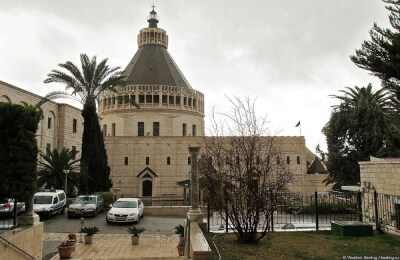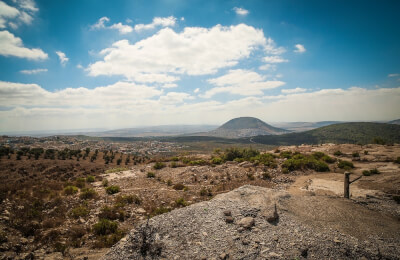
201. Horns of Hittin and Magdala Promotion
We also found excursions from other cities that are close to your departure city
Other excursions that also deserve your attention
Magdala, known in modern times as Migdal, is a site of rich historical and religious significance located on the western shore of the Sea of Galilee in Israel. It is most renowned for its association with Mary Magdalene, a prominent follower of Jesus Christ, from whom the town gets its name. The site offers an exquisite window into the Jewish and Christian histories, layered through the ruins and ongoing archaeological discoveries.
Historical Background of Magdala
The history of Magdala stretches back to the time before Christ, where it began as a simple fishing village. During the first century CE, it grew in prominence due to its location on the Sea of Galilee and its position on a major trade route, the Via Maris, which linked Egypt with the northern empires. Magdala’s significance in ancient times was not merely economic; it was also a political and religious center. It is mentioned in historical sources, including the writings of Josephus Flavius, who documented the First Jewish-Roman War, which notes Magdala’s role and the destruction it faced at the hands of the Romans.
Archaeological Discoveries in Magdala
In recent years, Magdala has gained attention due to several groundbreaking archaeological finds. Excavations have uncovered an ancient synagogue dating back to the Second Temple period, one of only seven from this period discovered in Israel to date. The Magdala Stone, found within the synagogue, is of particular importance. Its carvings include the oldest known artistic depiction of the Second Temple's menorah, providing valuable insights into Jewish life and culture of that era. Another fascinating discovery is the Magdala Stone, which is thought to have been used as a base for Torah scrolls. The presence of this stone suggests that Magdala was a significant religious center for Jews during the time of Jesus.
Christian Pilgrimage Site
For Christians, Magdala is a site of pilgrimage due to its association with Mary Magdalene. The New Testament describes Mary Magdalene as being from this area and as a close follower of Jesus, witnessing his crucifixion and his resurrection. The Duc In Altum spiritual center, located in Magdala, commemorates her and the presence of Jesus in the Galilee region.
Modern Developments and Tourism
Modern-day Magdala has been developed with the pilgrim and tourist in mind. The recently built Magdala Hotel provides accommodations for visitors, and the site’s archaeological park offers guided tours to explore the ancient town’s remains and imagine life during the time of Jesus. The Duc In Altum, part of the Magdala center, features chapels and a worship area dedicated to the women of the Bible, highlighting their significance and drawing many to reflect on the historical impact of female figures in Christianity.
The Magdala Project
The Magdala Project is an ambitious initiative that aims to promote the cultural and spiritual heritage of Magdala. It involves not only archaeological excavations but also the development of educational programs and the enhancement of visitor experiences.
Geography and Nature
The natural setting of Magdala is as striking as its historical importance. Nestled on the shores of the Sea of Galilee, visitors to Magdala are treated to breathtaking views of the Golan Heights and surrounding landscapes, which add to the spiritual and aesthetic experience of the site.
The Impact of Magdala on Local Communities
The development of Magdala as an archaeological and religious site has had a considerable impact on the local community. It has brought economic growth through tourism and provided opportunities for education and employment.
Cultural Significance and Interfaith Dialogue
Magdala serves as a platform for interfaith dialogue and understanding. The site's importance to both Judaism and Christianity makes it a unique place where people from different faiths can come together to learn from and about each other.
Future of Magdala
Ongoing excavations and research at Magdala continue to uncover new findings that contribute to our understanding of ancient Jewish and Christian histories. There is a considerable potential for new discoveries that could further illuminate the rich tapestry of the region’s past.
Conclusion
Magdala is a site that encapsulates the intersection of history, archaeology, religion, and culture. Its layers of history offer insights into the lives of those who walked its streets over two thousand years ago. For modern visitors, whether they are scholars, religious pilgrims, or tourists, Magdala provides an opportunity to connect with the past in a profound and personal way. Its ongoing excavation and preservation are a testament to the enduring importance of historical and spiritual sites in understanding human history and shaping our contemporary world.

